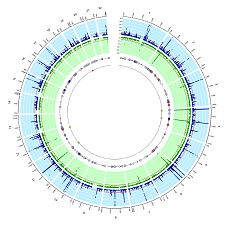DNA findings suggest improved way to predict gout
Genetic data from half a million individuals informs on gout prediction and biological underpinning of high urate levels: October 2019

A worldwide team of scientists carried out a genetic study of blood urate levels in nearly half a million individuals. Urates are salts that can be found in blood and urine. In the past, it has been found that a high amount of these urates cause gout. Gout attacks are a painful response to the urates that form into crystals in the joints. Although gout is a major health issue, it is under-treated. High levels of urates are also associated with cardiovascular and kidney disorders, but the reasons for these associations are less well understood.
This study was made possible by study volunteers from a range of different international research studies. These include the Orkney Complex Disease Study, Viking Health Study Shetland, Generation Scotland and the Croatian Biobank, each of which are managed by teams at the IGMM, University of Edinburgh.
The data from these, and other cohorts revealedan increased number of areas of the human genome that can improve the prediction of raised urate levels. Individuals in the highest genetic score categories had more than 3 times the chance of developing gout, compared to people in the most common category. In the future this genetic knowledge should help to identify healthy people with a high chance of developing gout. This would allow them to make lifestyle choices such as a change in diet, to reduce their risk.
This large study has created an “atlas” of DNA, genes, tissues and pathway changes involved in making urate and breaking it down. Kidney and liver tissues were the main target for the genes that were found. Further laboratory work helped to understand how urate levels and metabolic diseases may be affected by the same genetic changes.
This work has revealed biological pathways that can underpin changes in urate and lead to diseases such as gout and cardiovascular disease, which can be studied further. We hope this work will help target guidance on how to prevent gout to those most at risk
Links
Original article: https://doi.org/10.1038/s41588-019-0504-x
Free article download: https://rdcu.be/bSLtv
Quantitative Trait Loci Research Group

